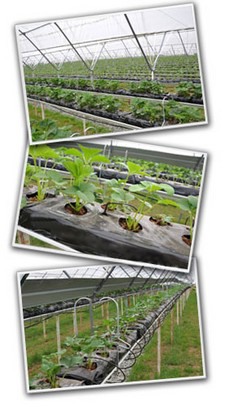
"Last year, due to the weather, tomato prices increased to 15 Real and caused a great increase in the country's inflation. This situation benefited cherry tomato producers, who had protected crops and obtained big profits," states Lysandro Canaes, sales director of Haygrove Brazil.
Haygrove is present in 55 countries and has three factories in Mexico, Poland and China. Two years ago, the company arrived to Brazil, where it is developing the market for greenhouse building equipment.
Most cherry tomato producers in Brazil have greenhouses with very little technology. And according to Lysandro, the development of high-tech greenhouses would increase productivity by up to 50%.
"Producers should be aware that the quality of the plastic, the design and engineering of the greenhouse are key to achieving high levels of productivity," he says, adding that "greenhouses are something quite new in Brazil; the country still needs more agronomists with knowledge on the subject. Companies do not have a human resources structure trained in protected cultivation."
According to Lysandro, "there is a large market for protected cultivation in Brazil," but Mercosur producers find the initial investment in protected cultivation technologies more burdensome than other South American countries.
"The cost of installing a basic Haygrove greenhouse in Peru and Chile is of around $ 5 per square metre, while in the Brazilian market or in Argentina, due to high import taxes, the price doubles," explains Lysandro.
Also, another factor is access to state funding, which requires a minimum percentage of the equipment to be manufactured with Mercosur-made components.
"In the beginning we imported 100% of the materials, but recently 60% of them have started being manufactured in Brazil; in this way, we get the government to fund the construction of the greenhouses," he says.
Haygrove provides growers with an intermediate cost option. The use of concrete in the construction process is no longer necessary, which allows to cover large areas on both flat or uneven terrain. The company thus hopes to boost the sector's development.
"This not only applies to tomatoes; the greenhouse pepper market is also expanding quickly in Brazil. We expect a 200% increase in the acreage over the next five years," concludes Lysandro Canaes.
For more information:
Lysandro Canaes
 HAYGROVE BRASIL
HAYGROVE BRASILT: 19 9824-3552
lysandro@imbrasolo.com.brwww.haygrove.com.br



